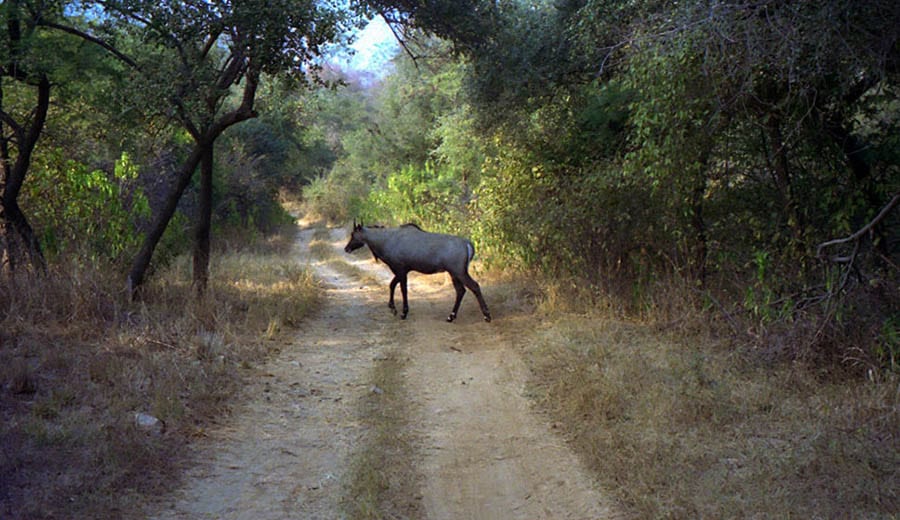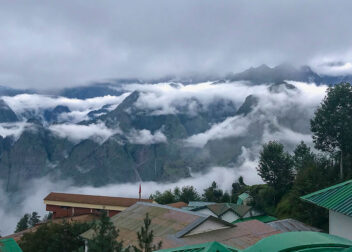Sariska National Park – A Wildlife Sanctuary in Rajasthan
Nestled in the heart of the Aravalli range in the Indian state of Rajasthan, Sariska National Park stands as a testament to the rich biodiversity that graces this region. This expansive wildlife sanctuary, spanning over 866 square kilometers, is a haven for nature enthusiasts, offering a unique blend of wildlife, historical landmarks, and lush landscapes.
The Wildlife Sanctuary Experience
Sariska National Park is renowned for its diverse flora and fauna, providing a home to a variety of species. From majestic Bengal tigers and leopards to spotted deer, sambars, and numerous bird species, the park offers a thrilling safari experience. The varied topography, including grasslands, dry deciduous forests, and rocky landscapes, adds to the allure, making every safari a journey of discovery.
Wildlife Encounters: A Symphony of Nature
As you embark on a safari through Sariska National Park, the sheer diversity of wildlife captivates the senses. The regal Bengal tigers, once on the brink of extinction in Sariska, have made a remarkable comeback through concerted conservation efforts. Catching a glimpse of these elusive big cats in their natural habitat is a highlight that draws wildlife enthusiasts from around the world.
Apart from the charismatic tigers, Sariska is home to a variety of fauna, including leopards, striped hyenas, Indian jackals, and sambar deer. The park’s birdlife is equally impressive, with species like golden-backed woodpeckers, Indian peafowls, and various raptors gracing the skies. The blend of wildlife against the backdrop of the Aravalli hills creates a symphony of nature that resonates with every visitor.
History and Heritage
Beyond its natural wonders, Sariska has a rich historical backdrop. The park was once the royal hunting ground of the Maharajas of Alwar, adding a layer of historical significance to its expansive landscapes. Visitors can explore the ruins of medieval temples like the Neelkanth and Garh-Rajor, which add a touch of mystique to the landscape. The Kankwari Fort, situated within the park, is a testament to the region’s historical significance.
Kankwari Fort: Echoes of the Past
The Kankwari Fort, perched atop a hill within the national park, stands as a silent witness to bygone eras. Dating back to the 17th century, this historic structure was the site where Mughal Prince Dara Shikoh was once held captive by his brother Aurangzeb. Exploring the fort not only offers panoramic views of the surrounding wilderness but also allows visitors to connect with the historical tapestry of Sariska.
Sariska’s Famous Residents: Bengal Tigers
The crown jewel of Sariska is undoubtedly its population of Bengal tigers. After facing near-extinction in the early 2000s, conservation efforts have successfully revived the tiger population. The sight of a Bengal tiger in its natural habitat remains one of the most exhilarating experiences for visitors, making Sariska a prime destination for wildlife enthusiasts.
Conservation Success: Bengal Tigers in Sariska
The successful reintroduction of Bengal tigers in Sariska is a testament to the dedication of conservationists and authorities. In 2008, after a period of absence, two tigresses were relocated to Sariska from Ranthambore National Park. Since then, the population has steadily increased, showcasing the positive impact of strategic conservation initiatives. Today, Sariska not only serves as a thriving habitat for these magnificent creatures but also contributes to the broader conservation narrative for the endangered Bengal tiger.
Biodiversity Hotspot: Flora and Fauna
Sariska National Park boasts a remarkable variety of plant and animal life. The dry deciduous forests are home to dhok, tendu, and ber trees, providing essential habitats for the diverse wildlife. In addition to big cats, the park is home to Indian leopard, striped hyena, and Indian jackal. Birdwatchers can delight in spotting golden-backed woodpeckers, Indian peafowls, and many more avian species.
Sariska’s Avian Delights: Birdwatcher’s Paradise
For bird enthusiasts, Sariska is a haven of avian delights. The park’s diverse habitats, including grasslands and water bodies, attract a wide array of bird species. From the vibrant plumage of Indian roller birds to the melodious calls of the Indian paradise flycatcher, the birdlife in Sariska adds a vibrant dimension to the overall wildlife experience. Guided birdwatching tours within the park offer an opportunity to spot and identify various bird species under the expert guidance of naturalists.
Adventure in the Wild: Safari Options
Embarking on a safari in Sariska National Park is an adventure like no other. The park offers both jeep and canter safaris, allowing visitors to explore its different zones. The thrill of encountering wildlife in its natural habitat, coupled with the stunning landscapes, creates an unforgettable experience.
Jeep Safari: Intimate Wildlife Encounters
Opting for a jeep safari provides an intimate experience with the wildlife of Sariska. The open nature of the jeep allows for unobstructed views, enabling visitors to capture photographs and relish close encounters with the inhabitants of the park. Trained naturalists accompany these safaris, offering insights into the behavior and ecology of the wildlife.
Canter Safari: Panoramic Views and Group Exploration
For those seeking a broader perspective, the Canter Safari is an excellent choice. The larger vehicle accommodates more passengers, making it ideal for group explorations. Canter safaris cover a wider area of the park, offering panoramic views of the diverse landscapes and increasing the chances of spotting different species.
Conservation Efforts and Challenges
While Sariska has made significant strides in tiger conservation, challenges persist. Human-wildlife conflict, poaching threats, and habitat degradation are ongoing concerns. Conservation initiatives and community engagement play a crucial role in ensuring the long-term sustainability of this unique ecosystem.
Community Involvement: A Key to Conservation
Engaging local communities in conservation efforts is pivotal for the success of wildlife sanctuaries like Sariska. Initiatives that involve nearby villages in sustainable practices, provide alternative livelihoods, and raise awareness about the importance of biodiversity contribute to the overall well-being of the park. The coexistence of wildlife and local communities is a delicate balance that requires continuous efforts and understanding.
Planning Your Visit: Practical Tips
- Best Time to Visit: The park is open from October to June, with the winter months being ideal for wildlife sightings.
- Accommodations: Alwar, the nearest city, offers a range of accommodation options catering to different budgets.
- Permits and Guides: Visitors need permits for safaris, and hiring a knowledgeable guide enhances the safari experience.
- Responsible Tourism: Follow park guidelines, maintain a safe distance from wildlife, and contribute to conservation efforts.
A Sanctuary for All Seasons
Sariska National Park offers a distinct experience throughout the year, with each season bringing its own charm. Winter months (October to February) are favored for wildlife sightings as the animals are more active in the cooler weather. The spring season (March to April) brings forth blooming flora, adding color to the landscapes. Summer (May to June) provides a unique perspective as the deciduous trees shed their leaves, enhancing visibility. Regardless of the season, Sariska remains a sanctuary for all seasons, promising an immersive encounter with nature.
Conclusion
Sariska National Park, with its blend of wildlife, history, and natural beauty, invites visitors to embark on a journey of exploration and discovery. Whether captivated by the elusive Bengal tiger, fascinated by historical ruins, or simply seeking the serenity of nature, Sariska promises an enriching experience for all who venture into its embrace.
FAQs
- How do I reach Sariska National Park?
- Sariska is approximately 107 kilometers from Jaipur, and the nearest railway station is in Alwar.
- Can I book safari permits online?
- Yes, online booking facilities are available for both jeep and canter safaris.
- What are the safari timings in Sariska?
- Safari timings vary based on the season, and it’s advisable to check the schedule in advance.
- Are there accommodation options within the national park?
- Accommodations are available in Alwar, and some resorts offer a stay closer to the park entrance.
- Is photography allowed during safaris?
- Yes, photography is allowed, but it’s important to follow park guidelines to ensure the safety of both visitors and wildlife.



